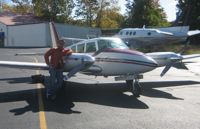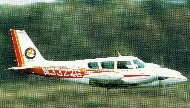TIP TANK W/B PA-30
7 posts
• Page 1 of 1
TIP TANK W/B PA-30
I was curious to know if Piper had a specific reason for stating in the POH that any weight over 3600lbs had to be fuel in the tip tanks...Seems odd to me. Thoughts?
-

fowlerflaps - ICS member

- Posts: 46
- Joined: Thu Jul 02, 2009 4:09 am
Hey chad, no idea, but a wild guess might relate to a wet wing is stronger than a dry one.
That is why some planes have a maximum zero weight fuel, have to carry fuel in wings for strength,,,,maybe similar for tips.....but don't hold me to this.
Someone w/ correct answer will show up, they always do, isn't that why we're here.
as a side note:
IFR mag that just came, pg 4, says you can check flight aware 30 min prior to departure to pick up IFR clearance, in case of crazy one like we got, they can send u email when it's ready??? i have to look into this...
steve
That is why some planes have a maximum zero weight fuel, have to carry fuel in wings for strength,,,,maybe similar for tips.....but don't hold me to this.
Someone w/ correct answer will show up, they always do, isn't that why we're here.
as a side note:
IFR mag that just came, pg 4, says you can check flight aware 30 min prior to departure to pick up IFR clearance, in case of crazy one like we got, they can send u email when it's ready??? i have to look into this...
steve
PA30-1773 N8632Y
-

N8632Y - ICS member

- Posts: 208
- Joined: Wed May 19, 2004 3:56 pm
- Location: N14 South Jersey
Don't know but speculating .... Could be one of those safety things for weight and balance so folks don't inadvertently get an aft CG.
Before Mom and the Twin moved south so we could fly it again, we looked at a Debonair and learned that if it was not properly loaded, as the fuel burned, you could end up with an aft CG pretty easily. It was one of the things that that took it off our potential buy list.
Before Mom and the Twin moved south so we could fly it again, we looked at a Debonair and learned that if it was not properly loaded, as the fuel burned, you could end up with an aft CG pretty easily. It was one of the things that that took it off our potential buy list.
Pat
Patricia Jayne (Pat) Keefer ICS 08899
PA-39 #10 Texas
Patricia Jayne (Pat) Keefer ICS 08899
PA-39 #10 Texas
-

N3322G - ICS member

- Posts: 1911
- Joined: Thu May 08, 2008 1:58 pm
- Location: Fort Worth, Texas area
Hello:
Actually, it is due to the strengh of the wings. It is due to the "load" on the wing attachment points that limits the zero fuel weight, or the dead load carried in the cabin.. Actually "live" weight
The further out from the root of the wing the greater the bending moment imposed on the wing attachment points...
So 150 lbs of lift generated on the outer portion of the wing that causes that bending moment in the root of the wing can be zerod out by putting 150lbs of fuel there. In effect offsetting each other.. ie carry that weight for free..
Well not for free you still need that extra horsepower to carry it but as far as the wing stresses go they are just as happy with or without that weight at the tips. But adding that extra weight closer to the fusealge and the wings are not so happy anymore!!
A good way to picture it is to picture an airplane flying with lift evenly generated by the wing and then hanging one big weight arrow on the fusalage....and invision the bending stresses at the roots of the wing..... then imagine one smaller weight arrow attached to the fuselage and two more small weight arrows at the tips... and you can see the wing will be happier... Confused....I need a chalk board!!
Cheers,
Gary
Actually, it is due to the strengh of the wings. It is due to the "load" on the wing attachment points that limits the zero fuel weight, or the dead load carried in the cabin.. Actually "live" weight
The further out from the root of the wing the greater the bending moment imposed on the wing attachment points...
So 150 lbs of lift generated on the outer portion of the wing that causes that bending moment in the root of the wing can be zerod out by putting 150lbs of fuel there. In effect offsetting each other.. ie carry that weight for free..
Well not for free you still need that extra horsepower to carry it but as far as the wing stresses go they are just as happy with or without that weight at the tips. But adding that extra weight closer to the fusealge and the wings are not so happy anymore!!
A good way to picture it is to picture an airplane flying with lift evenly generated by the wing and then hanging one big weight arrow on the fusalage....and invision the bending stresses at the roots of the wing..... then imagine one smaller weight arrow attached to the fuselage and two more small weight arrows at the tips... and you can see the wing will be happier... Confused....I need a chalk board!!
Cheers,
Gary
- md11flyer
- ICS member

- Posts: 330
- Joined: Tue Mar 24, 2009 3:48 pm
WELLLLLLL....true to a point, and certainly true in some airplanes BUT, the Comanche series does not have a certified zero fuel weight. As such it does not have any limitation on span loading in its certification. What is being referenced here is the STC for tip tanks. Although Piper installed tip tanks as optional equipment and std equipment on the Turbo twins, they were always installed under an STC (now held by Osbourne), and licensed as a Piper kit. It is a function of how the STC was approved.
In the singles, put the tip tanks on any 250 and voila, you have a legal 3000# gross weight, no matter whether there is fuel in them or not. Put tips on a 260B, and no gain in gross weight. Put them on a C, and you actually reduce the alowable gross weight, a quirk in the approved supplement paperwork!
As for the Twins, yes the supplement reads that all weight above 3600# must be carried in the tips as fuel. This was for certification, as the cert requirements for multiengine aircraft are significantly different than singles. There is a performance formula for certification that takes into account the stall speed, Vmc, SE climb rate above 5000', engine limits etc. The exemption to this is additional fuel so the aircraft did not have to be totally recertified with the tip tanks installed, it only needed a mini evaluation to prove that the handling performance was at least as good with them as without, when the only added weight is fuel weight.
The Twin Comanche airframe was tested and on paper, structurally, was certified to 3800#, however the aformentioned certification formula limited the certified gross to 3600#. The Robertson high lift kit, allowed the aircraft to meet the certification equation at 3800# so was thusly granted that gross weight...except when tip tanks are installed, and because of the paperwork interference between the two STCs, the last 125# of weight has to be in fuel, in the tips. Once again it makes little or no sense, but it is the way the tips were certified, nothing more nothing less.
-Zach
In the singles, put the tip tanks on any 250 and voila, you have a legal 3000# gross weight, no matter whether there is fuel in them or not. Put tips on a 260B, and no gain in gross weight. Put them on a C, and you actually reduce the alowable gross weight, a quirk in the approved supplement paperwork!
As for the Twins, yes the supplement reads that all weight above 3600# must be carried in the tips as fuel. This was for certification, as the cert requirements for multiengine aircraft are significantly different than singles. There is a performance formula for certification that takes into account the stall speed, Vmc, SE climb rate above 5000', engine limits etc. The exemption to this is additional fuel so the aircraft did not have to be totally recertified with the tip tanks installed, it only needed a mini evaluation to prove that the handling performance was at least as good with them as without, when the only added weight is fuel weight.
The Twin Comanche airframe was tested and on paper, structurally, was certified to 3800#, however the aformentioned certification formula limited the certified gross to 3600#. The Robertson high lift kit, allowed the aircraft to meet the certification equation at 3800# so was thusly granted that gross weight...except when tip tanks are installed, and because of the paperwork interference between the two STCs, the last 125# of weight has to be in fuel, in the tips. Once again it makes little or no sense, but it is the way the tips were certified, nothing more nothing less.
-Zach
"Keep it above 5 feet and don't do nuthin dumb!"
-

Zach Grant L1011jock - Technical Advisor
- Posts: 1404
- Joined: Mon Mar 22, 2004 4:35 pm
- Location: Indianapolis KEYE
Zach,
Curious, what impact do tip tanks have on the gross weight of a '65 260, (A-model)? I start at 2900lbs.
Chris
Curious, what impact do tip tanks have on the gross weight of a '65 260, (A-model)? I start at 2900lbs.
Chris
- Chris Kuyoth
- ICS member

- Posts: 123
- Joined: Sun Jan 16, 2005 6:20 pm
Chris,
You get 100#. Gross weight of 3000#...no fuel need be carried in the tips.
-Zach
You get 100#. Gross weight of 3000#...no fuel need be carried in the tips.
-Zach
"Keep it above 5 feet and don't do nuthin dumb!"
-

Zach Grant L1011jock - Technical Advisor
- Posts: 1404
- Joined: Mon Mar 22, 2004 4:35 pm
- Location: Indianapolis KEYE
7 posts
• Page 1 of 1
Return to ICS General Membership Discussions
Who is online
Users browsing this forum: No registered users and 2 guests
